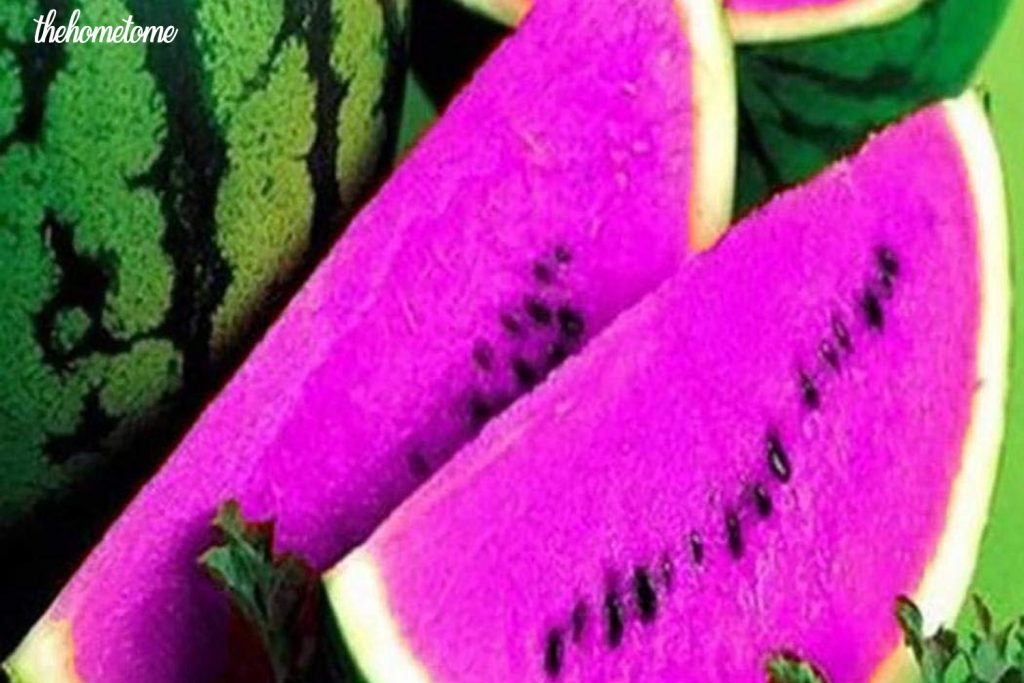There has been a recent buzz on purple watermelons, on if they are real and edible.
Watermelon is a common and very nutritious fruit and the regular color is meant to be deep red or pink on the inside and green on the outside. Watermelon is 91% water and there is the seed and the seedless watermelons which happens to be the only type of watermelon out there.
The color of your watermelon tends to indicate if it’s healthy or not which also explains why there are speculations on purple watermelon. Watermelons are prone to the mosaic virus and this can be treated and prevented from getting serious. However, this can’t lead to purple color watermelon either.
Watermelons can be enjoyed raw or pickled, and it is also one of the most cultivated fruit in the world. Understanding the color to expect if you plant watermelon in your garden no matter the variety can help prevent harvesting unhealthy watermelon.
Purple Watermelons: Are They Real And Edible?
No, purple watermelons are not real and neither will any irregular colored watermelon be edible.
There are seed and seedless watermelons but in terms of purple melon, someone took a picture of watermelon and manipulated the color. The juicy flesh of watermelons is meant to be red to pink while the flesh is salmon yellow is a natural mutation and the exterior is green.
Watermelon is prone to a disease called the mosaic virus and this can cause it to look discolored and severely distorted if it gets severe, but it won’t make your watermelons purple. There are cubed or square watermelons but not colored watermelons. If there are seeds for purple watermelon then you shouldn’t buy it.
An overripe watermelon should have bright pink or red flesh and a thick pale rind while the overripe ones tend to have paler pink flesh and green rind. The most important part of the watermelon is the flesh, but the skin is surprisingly edible and although it’s not as juicy as the fruit it is protected, but it is beneficial as well.
Watermelon Varieties And Color
There are different varieties of watermelon and the Crimson Sweet happens to be many gardeners’ favorite.
There as recently been searches for blue and purple varieties of watermelon online, but research shows this is just a myth and watermelon still maintains its colors.
The white watermelon which is called the white wonder watermelon is another rare type of watermelon variety, and it’s a rare watermelon though but was very common in the 1800s.
Everyone is familiar with the vivid red or reddish-pink but colors such as blue, purple, or black are not considered to be edible. The ideal color of watermelon exterior you should watch out for is the dark green and dull-looking ones and these are considered sweeter too.
5 Common Types Of Watermelons
Just like every fruit out there, watermelon has common types and varieties too. Watermelon varieties tend to fall under specific types hence it’s often confusing for people to identify them. Watermelon is a popular fruit to ave in your garden and to help differentiate them, here are its common types.
1. Seedless And Seeded Watermelon
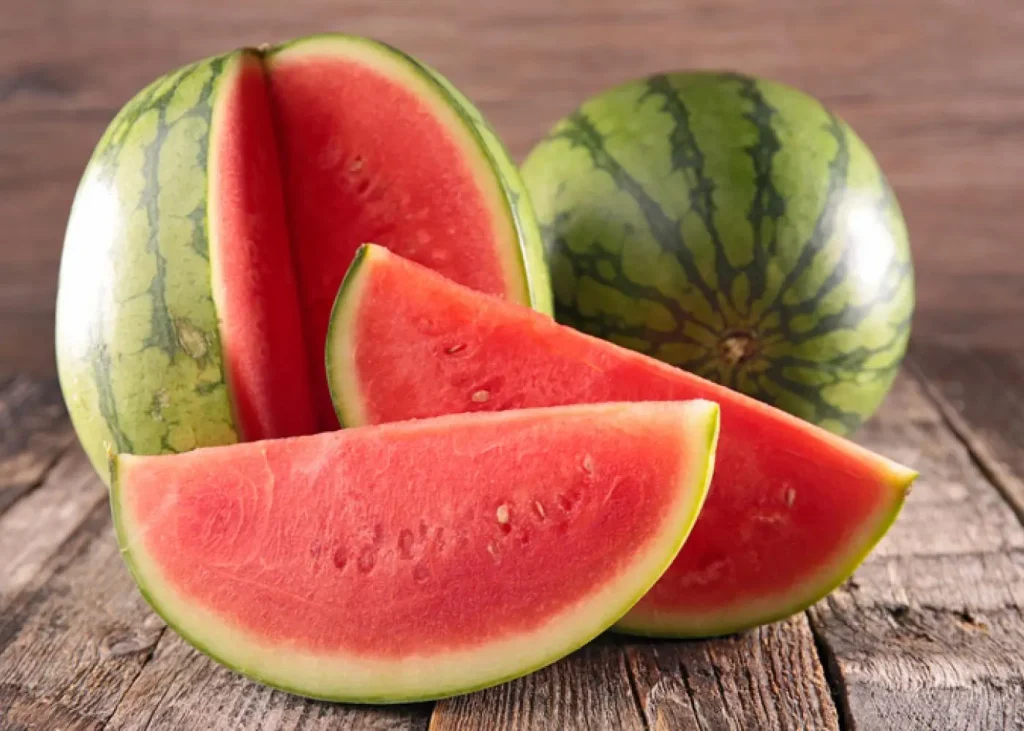
Seedless and seeded watermelons are the two most common types of watermelons and they don’t require a long growing season. This type of watermelon. The seedless watermelon happens as a result of cross-breeding which seeded are the regular type of watermelons. Seeded watermelons are tastier, but both have the same nutritional composition.
Although seedless varieties are not as sweet as the bland ones, they are nutritious. The seedless varieties are perfect for making dishes like sorbet or salads. Varieties of watermelon under seedless are mini piccolo, triple crown, and big tasty.
2. Picnic Watermelons
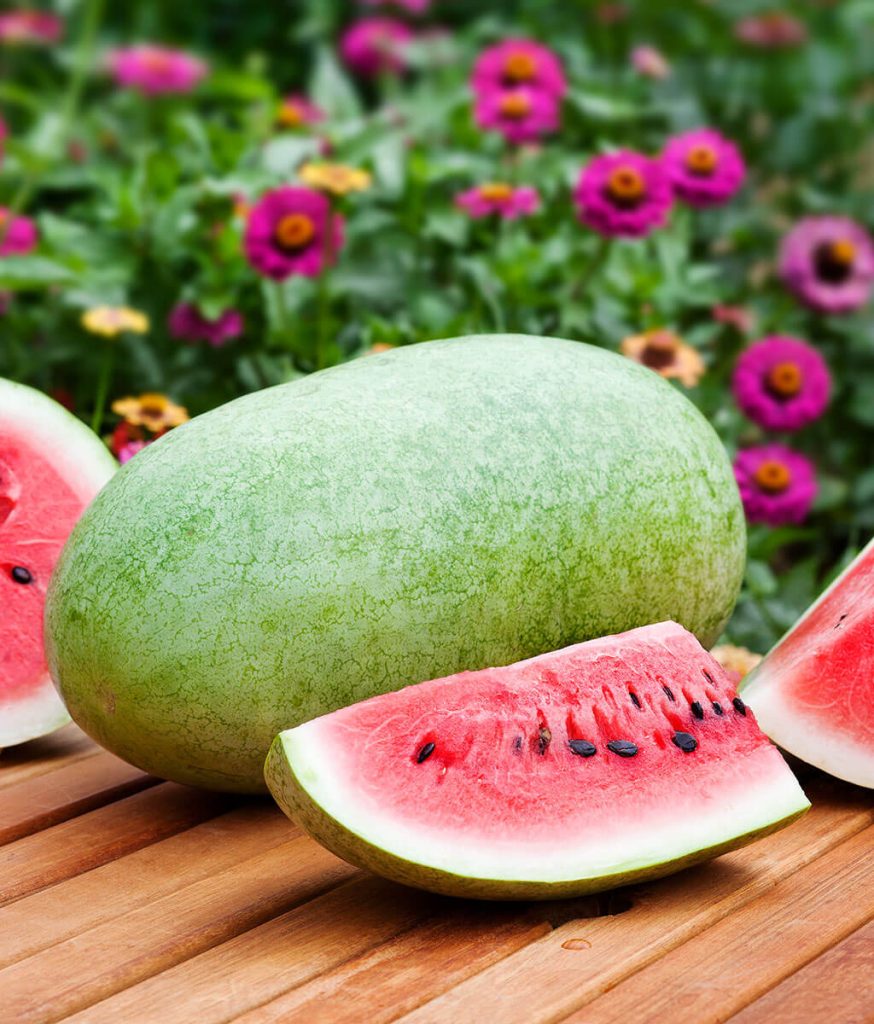
Picnic is another healthy cultivar to consider when thinking of watermelon. It’s another tasty watermelon and can come in oblong or round size. Watermelon fruit weighs at least 15 pounds and this is why it’s called picnic watermelon as it can serve a lot of people at once.
Picnic watermelon has also resistant to diseases. Varieties of picnic watermelon include Charleston gray, Georgia rattlesnake, Sweet princess, All sweet, Crimson sweet.
3. Miniature
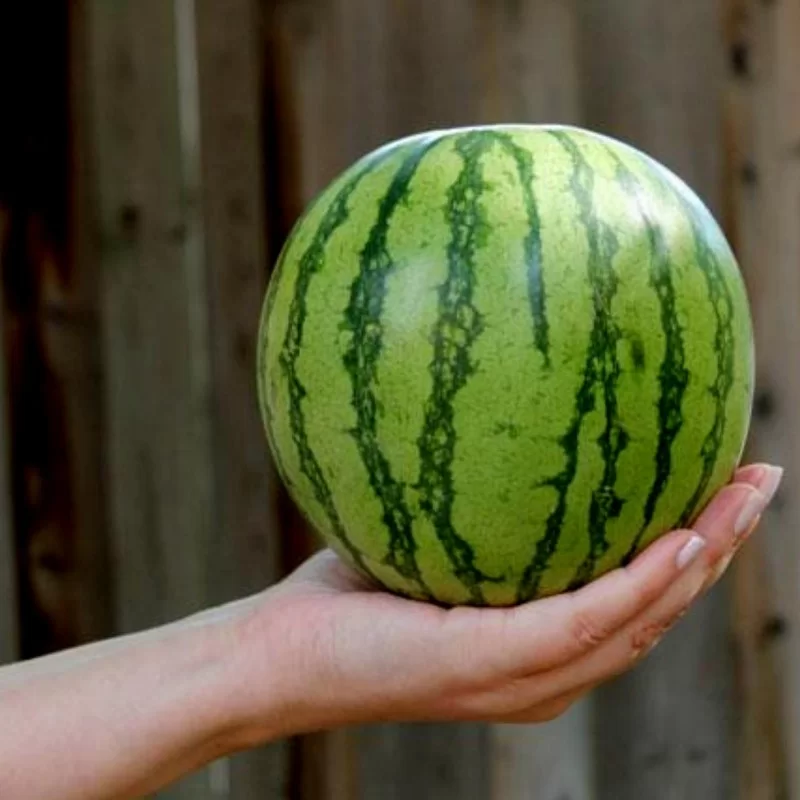
The miniature watermelon is also known as the organic watermelon. It’s another watermelon loved for its taste and although similar to icebox but it’s not the same. The full size of a miniature watermelon is 6 to 8 inches in diameter and some are about the size of a cantaloupe or smaller.
4. Icebox
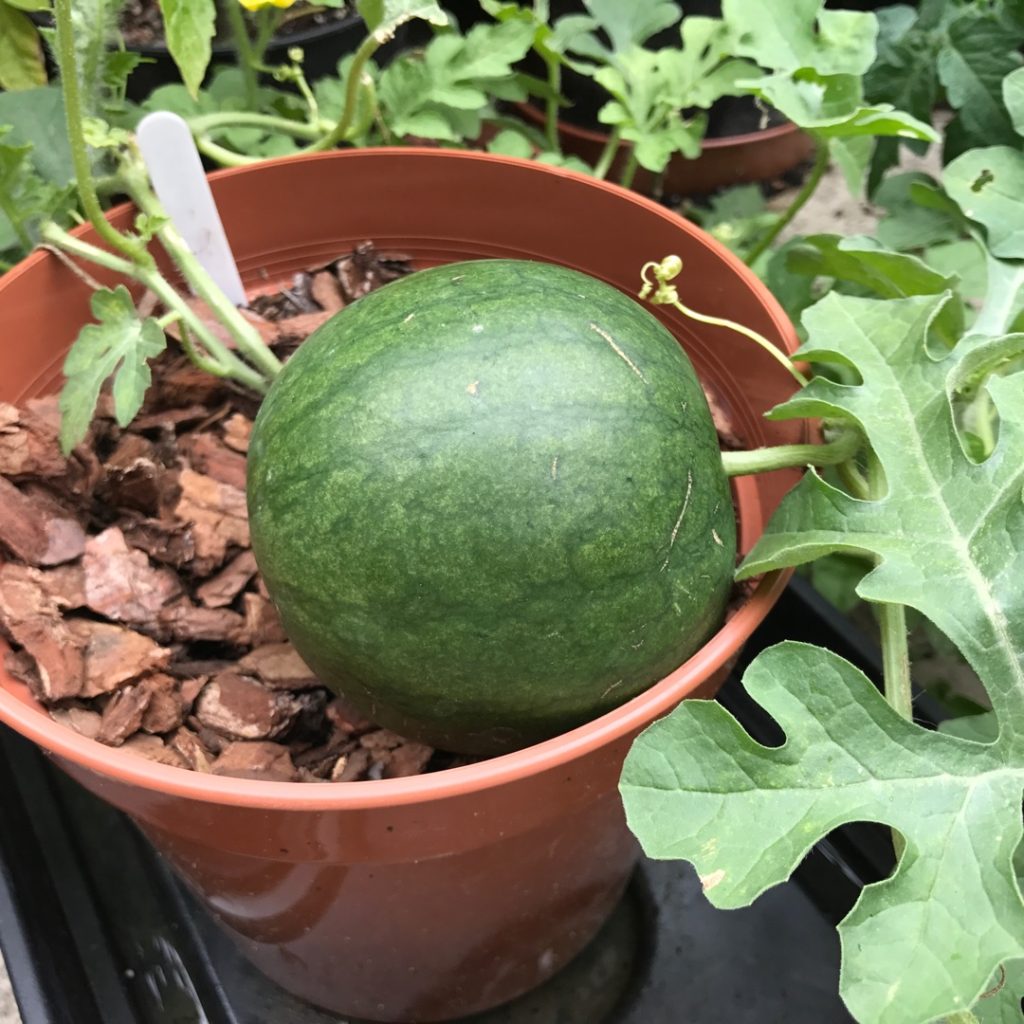
Icebox is a type of watermelon developed to be small although not as small as the miniature watermelon but not as big as picnic watermelon either. It is a perfectly round fruit with deep red flesh and a dark green rind. This type of watermelon tends to mature faster and some of its varieties include bush sugar baby and sweet beauty.
5. Orange, Yellow Or White Flesh
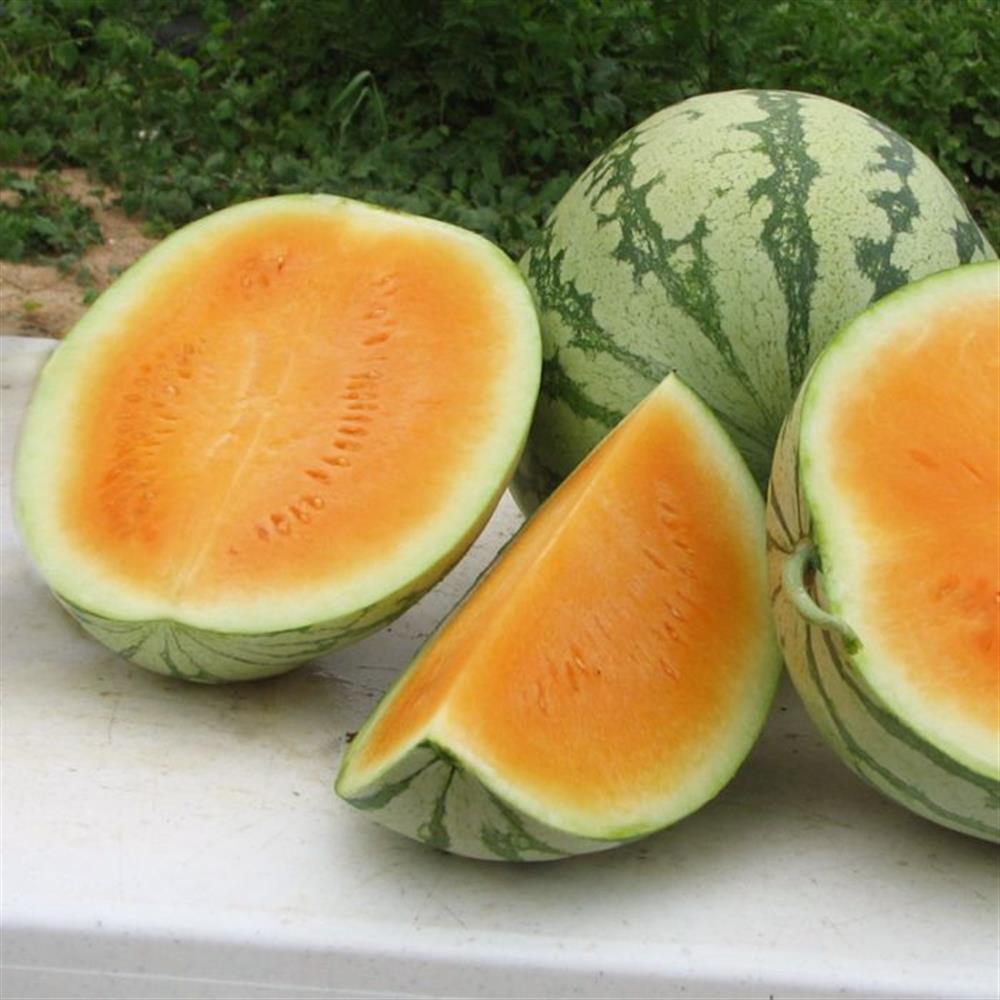
It’s hard not to have noticed a bright orange or yellow watermelon as they are everywhere. This type of watermelon is ideal if you love growing colorful fruits and although not as popular as other types of watermelons but loved for their sweet crisp taste.
Varieties under this type of watermelon include Gold in Gold, mountain sweet yellow, yellow petite, orange tender sweet, orange crisp, and orangeglo.
What happens if you eat watermelon every day?
It is important to consume everything in moderation no matter how beneficial they are.
Watermelons are a great source of fiber and water but consuming any fruit every day can cause too much potassium or lycopene in the body which can lead to indigestion, bloating and diarrhea.
Wrapping Up
90% of watermelon is water and if you are trying to lose weight, this is one of the best fruit to go for. Photoshop has been used to make watermelons take up different colors but not is considered real except it’s red or pin.
Photos of sliced purple watermelon have been seen in ads and recently on Amazon, but this is often used to promote new seeds and your watermelon will always be red or pink inside.

